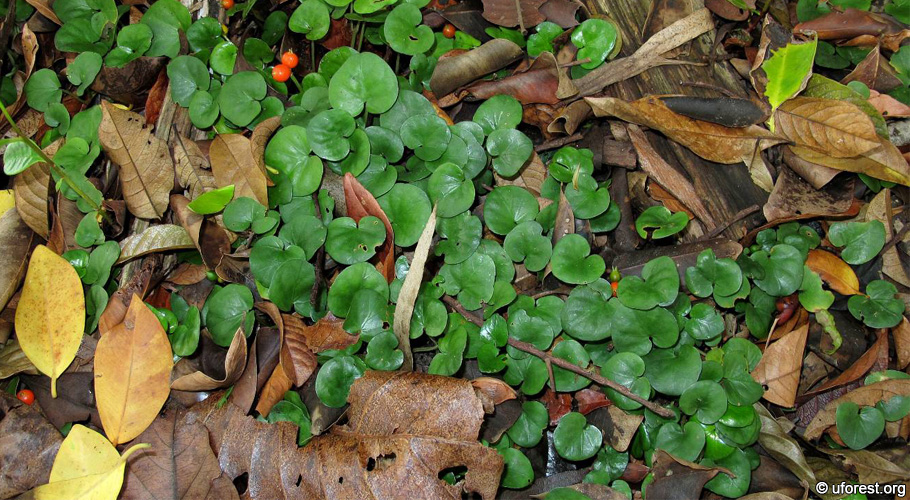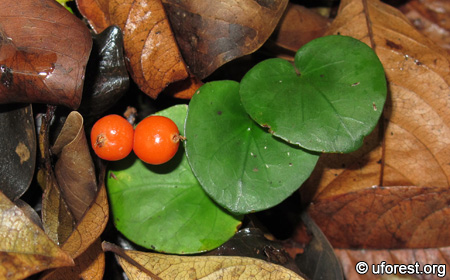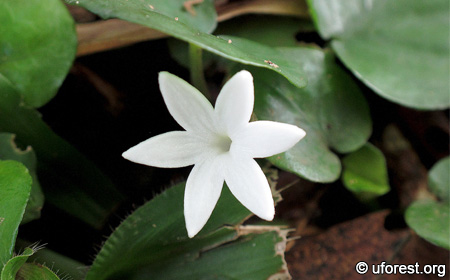Geophila herbacea (Jacq.) K.Schum.
| Etymology | Genus | Earth-loving; referring to its creeping habit |
|---|---|---|
| Species | Creeping; referring to its habit | |
| Family | Rubiaceae | |
| Synonyms | Geophila repens auct. non (L.) I.M.Johnst. | |
| Common Names | Snake Pennywort, Pegaga Ular, Rat Pennywort (Pegaga Tikus) | |
| Status | Native: Endangered | |
| Form | Creeping herb | |
| Native Distribution | Pantropical | |
Diagnostics:
An uncommon prostrate herb that can only be found in a few localities (see description). It is shade-loving, hence only found under tree canopies. The leaves are oppositely arranged, rounded with a heart-shaped base. The leaf blade is also hairless, mildly glossly, and palmately-veined. A useful guide is to look out for its small but bright orange fruits, which are almost always present.
Interesting Facts:
Its pollination and dispersal biology are poorly-documented, though Guppy (1906), and Ridley (1930) suggested it to be bird-dispersed because the brightly coloured fruits. A study by Yumoto (1999) in Colombia confirmed this through the observations of the Salvin's curassow (Mitu salvini), a ground-dwelling bird feeding on the fruits and postulated that it is an important disperser for Geophila repens.
Natural populations can still be found at the southern regions of Singapore, namely: at the manicured grass patches near Peirce Road, Henderson Road, Makeway Avenue, and Orchard Boulevard; in the cemeteries at Jalan Kubor and Outram Road; in Pearl's Hill City Park, Fort Canning Park, and Istana Park; and in the natural vegetation adjacant to Jacob Ballads Children's Garden (Teo et al., 2010; pers. comm. Crag W. & Koh J.; pers. obs.).
This species has been updated as Geophila herbacea based on the latest flora of Singapore and was misidentified earlier.

The Snake Pennywort, photographed in Pearl's Hill City Park.

Bright orange fruits and close-up of leaves.

The star-shaped flower.
References
Guppy HB. (1906) Observations of a Naturalist in the Pacific between 1896 and 1899. Volume II: Plant-Dispersal. Macmillan and Co Limited, New York. 627 pp.
Ridley HN. (1930) The Dispersal of Plants throughout the World. L. Reeve & Co., LTD., London. 744 pp
Teo S, BR Kurukulasuriya & HTW Tan. (2010) The distribution and status in Singapore of the snake pennywort, Geophila repens (L.) I.M. Johnst. (Rubiaceae). Nature in Singapore, 3: 183-186.
Author: Siyang
Posted: 2012-01-13 / Modified: 2025-10-30